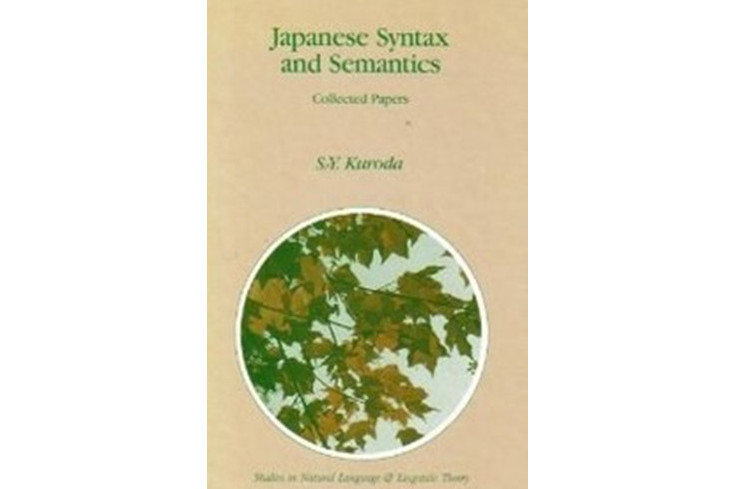《Japanese Syntax and Semantics》是1992年出版的圖書,作者是Kuroda, S.-Y.。
基本介紹
- 中文名:Japanese Syntax and Semantics
- 別名:Collected Papers
- 作者:Kuroda, S.-Y.
- 語言:英語
- 出版時間:1992年2月
- 頁數:383 頁
- ISBN:9780792313908
- 定價:326.57 美元
內容簡介,圖書目錄,作者簡介,
內容簡介
1. Two main themes connect the papers on Japanese syntax collected in this volume: movements of noun phrases and case marking, although each in turn relates to other issues in syntax and semantics. These two themes can be traced back to my 1965 MIT dissertation. The problem of the so-called topic marker wa is a perennial problem in Japanese linguistics. I devoted Chapter 2 of my dissertation to the problem of wa. My primary concern there was transformational generative syntax. I was interested in the light that Chomsky'S new theory could shed on the understanding of Japanese sentence structure. I generalized the problem of deriving wa-phrases to the problem of deriving phrases accompanied by the quantifier-like particles mo, demo, sae as well as wa. These particles, mo, demo and sae may roughly be equated with a/so, or something like it and even, respectively, and are grouped together with wa under the name of huku-zyosi(副助詞) as a subcategory of particles in Kokugogaku(國語學), Japanese scholarship on Japanese grammar. This taxonomy itself is a straightforward consequence of distributional analysis, and does not require the mechanisms of transformational grammar. My transformational analysis of wa, and by extension, that of the other huku zyosi, consisted in formally relating the function of the post-nominal use of wa to that of the post-predicative use by means of what I called an attachment transformation.
圖書目錄
Acknowledgements vii
Introduction 1
Chapter 1 / Judgment Forms and Sentence Forms
Chapter 2 / Remarks on the Notion of Subject with Reference to Words Like also, even, and only
Chapter 3 / Pivot-Independent Relativization in Japanese
Chapter 4 / A Remark on Certain Constructions with the word naka in Japanese
Chapter 5 / On Japanese Passive
Chapter 6 / Case Marking, Canonical Sentence Patterns, and Counter Equi in Japanese (A Preliminary Survey)
Chapter 7 / What Can Japanese say About Government and Binding
Chapter 8 / Movement of Noun Phrases in Japanese
Chapter 9 / What happened After the Movement of NPs in La Jolla?
Chapter 10 / Whether We Agree or Not: A Comparative Syntax of English and Japanese
References
作者簡介
Sige-Yuki Kuroda (黒田 成幸 Kuroda Shigeyuki, 1934 – February 25, 2009), aka S.-Y. Kuroda, was Professor Emeritus and Research Professor of Linguistics at the University of California, San Diego. Although a pioneer in the application of Chomskyan generative syntax to the Japanese language, he is known for the broad range of his work across the language sciences. For instance, in formal language theory, the Kuroda normal form for context-sensitive grammars bears his name.
Early Life and Career
Kuroda was born into a prominent family of mathematicians in Japan. His grandfather, Teiji Takagi, studied under David Hilbert. Kuroda himself received degrees in mathematics and linguistics from the University of Tokyo. In 1962, he entered MIT with the first graduating class from the new Department of Linguistics, where he wrote his seminal dissertation, Generative Studies in the Japanese Language (1965) under Chomsky's supervision.

